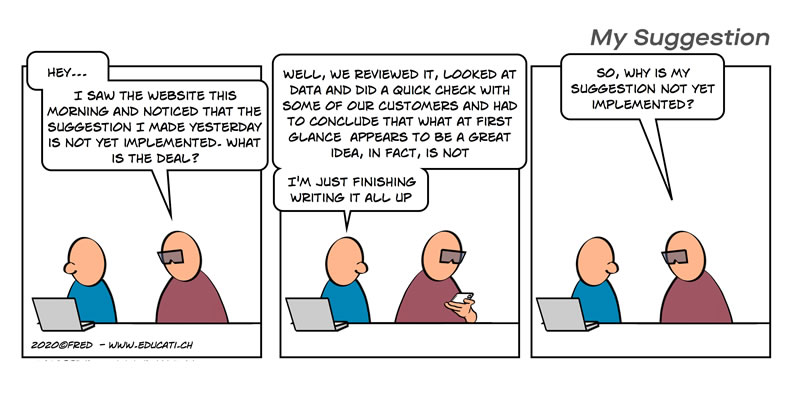
Personas once were an eye opener to become more user centric, but appear to have been evolved into one of those ‘been there, done that‘ kind of activities.
The value of personas is to be come more user centric. We all design and build for ourselves, and when we say “I think the customer would like….” what we actually are saying is “I would like…“. In my experience this creates two problems;
- Discussions are difficult. Since I stated something about what I as a user like, I may feel personally offended when you do no agree with it.
- Not user centric. Since we only talk about ‘the user’ while in fact thinking and reasoning about ourselves, we actually are not user centric, no matter how much our discussions suggest we are.
Before I learned about personas I would ask the developers in the team whether their mother would like to use it, or their sister etc.; a woman they personally know. I know, totally a sexist approach, but reality is that if you ask a male developer to think about what a female person would like, suddenly all technically nerd kind of ideas escape their minds, and the discussion actually is about use. Also, you can have a rational discussion, because it is not about them personally (however much they refer to themselves as the user).
Working with personas has the same effect. I first discovered Personas reading Cooper’s 1999 book The Inmates are Running the Asylum, and given what I described before, the approach made total and perfect sense. Over the years I have used it extensively, both in my own work, and when working with students in any kind of teaching capacity.

I also learned that personas are only effective if you developed them yourself, or if you were part of their definition and development. The reason for asking “What would your mother think of this?” and not “What would a woman think of this?” is because you know you mother. You can relate. Only if you develop the personas, if you get to know there personas in sufficient detail, you are able to relate.
Regretfully, I learned this the hard way. On one occasion working at a fashion company I had a product team develop personas and the transformation was phenomenal. The team shifted to discussing ideas in terms of personas they developed to the benefit of the team collaboration and to the quality of the product. However, on another occasion, when I had acquired a project to develop personas for a wealth management department of a major bank, I was less successful. I did create a beautiful cast of personas, for which I interviewed numerous client advisors and an occasional client. But in hind-sight, I should not have performed the interviews myself and instead should have coached the product developers from the department through the interviews and persona development. Although I delivered the afore mentioned cast of 50+ personas, well defined in all details, and beautifully printed on cards of which I delivered multiple packs to the client, I guess the cards ended on the shelf somewhere, and of all the people in the department I was the only one really understanding the customers.
Personas are effective in bringing user centricity into development, and in enabling good team collaboration. But this only works if the team themselves develop the personas, so that they really get to know them and embrace them as a team. Otherwise, personas is just some thing to fool around with, a ‘been there, done that’ kind of exercise, probably not worth the effort.